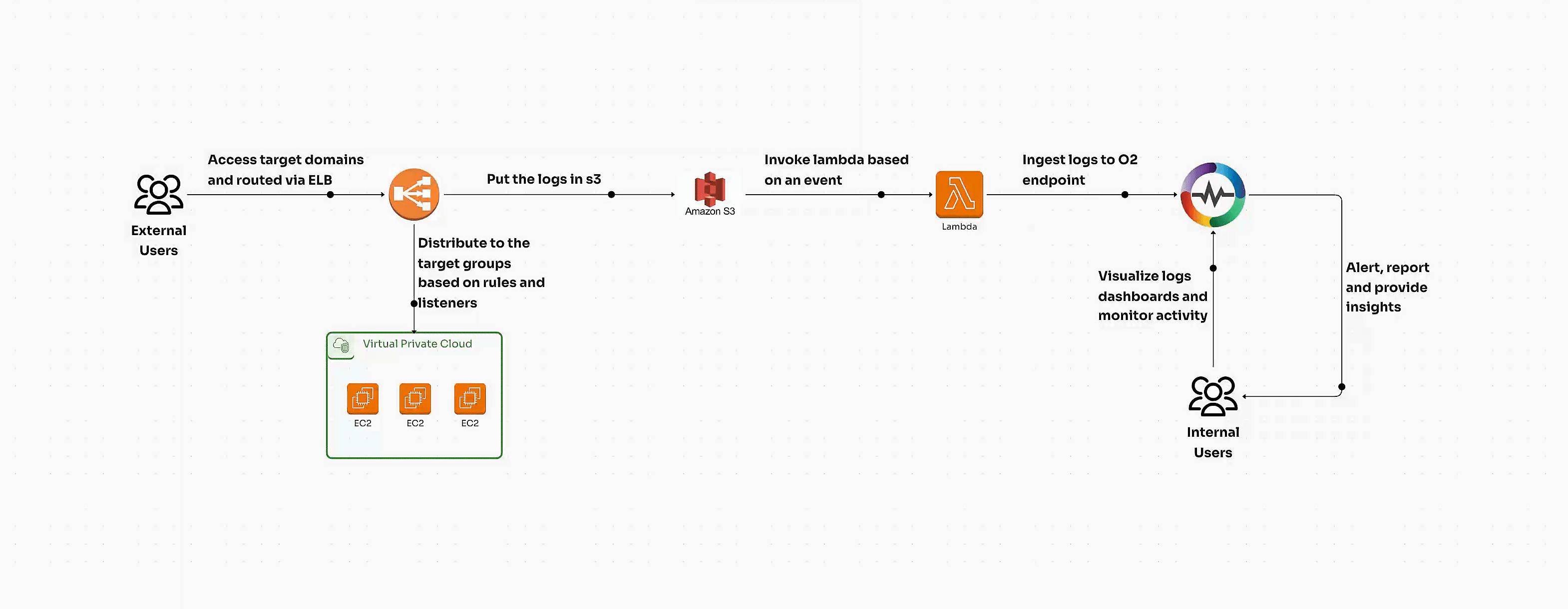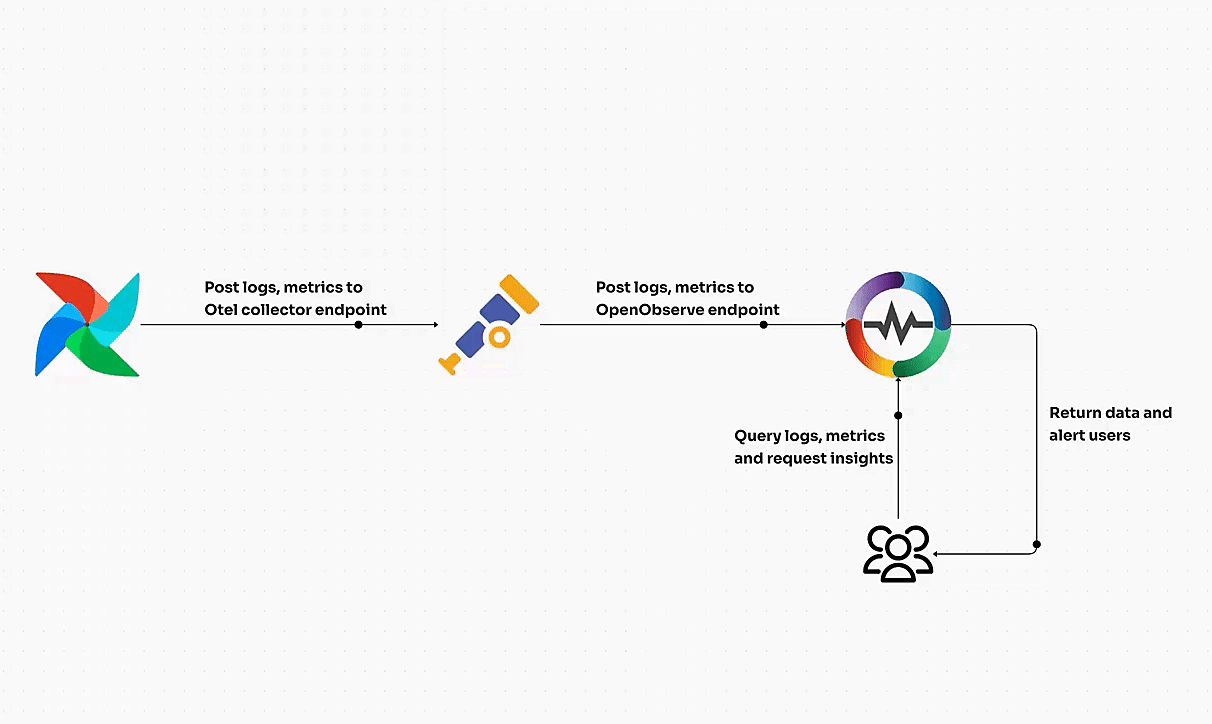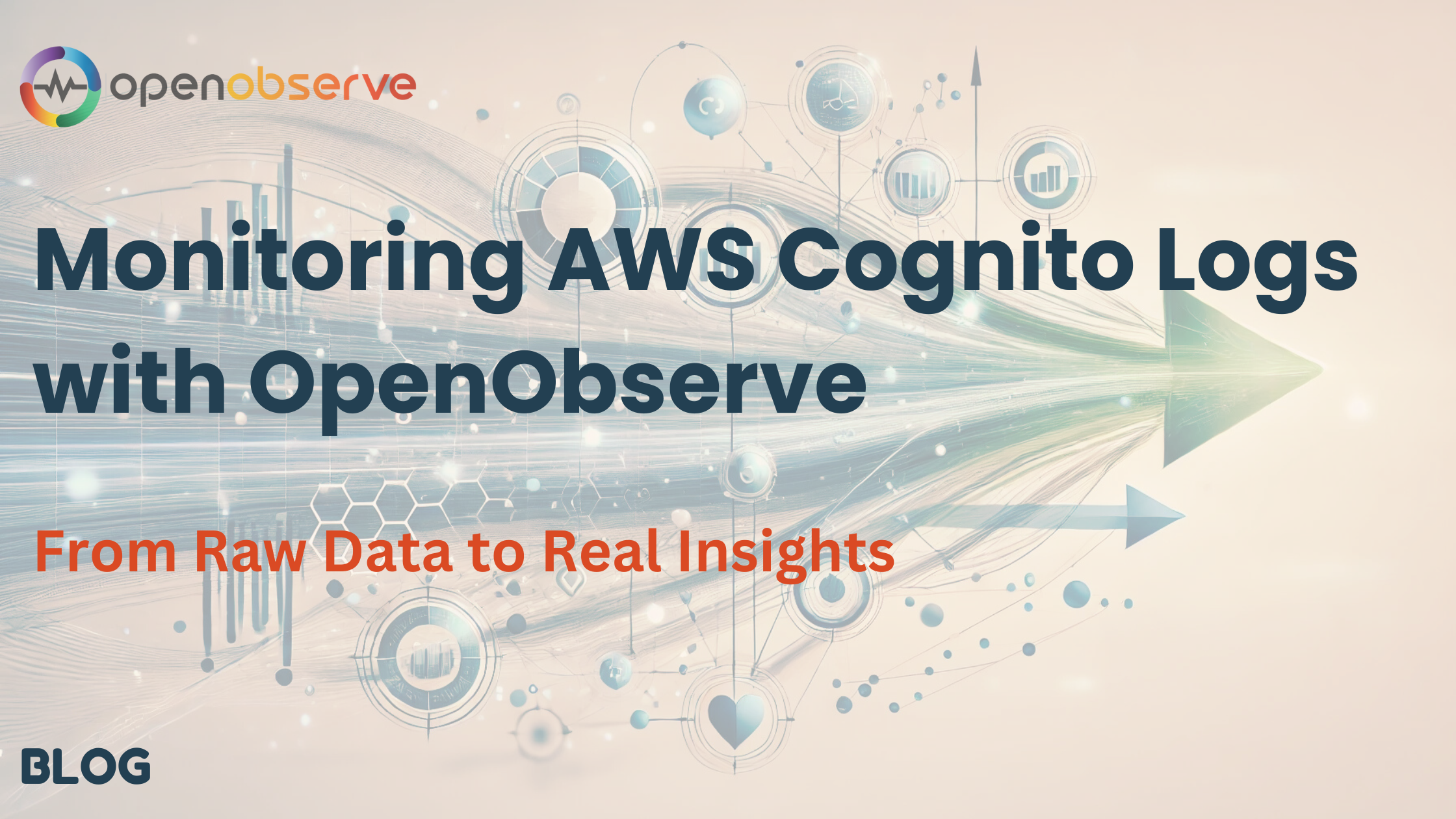Monitoring Oracle Database Receiver in the Cloud

Monitoring Oracle databases in the cloud is not just a best practice. It's a necessity for ensuring optimal performance and reliability. In today's digital landscape, where applications are increasingly reliant on robust database systems, the significance of Oracle databases cannot be overstated.
These databases support a variety of workloads, including online transaction processing (OLTP), data warehousing, and mixed workloads, making them central to many organizations' operations.
The Critical Nature of Monitoring
As organizations migrate their databases to the cloud, the complexity of maintaining performance and health increases. Monitoring Oracle databases in cloud environments is crucial for several reasons:
Performance Optimization: Continuous monitoring helps identify performance bottlenecks and inefficiencies, enabling proactive adjustments before they impact end users.
Health Checks: Regularly assessing the health of the database ensures that issues are detected early, reducing downtime and maintaining service availability.
Resource Management: Cloud environments often involve dynamic scaling of resources. Monitoring allows for better resource allocation and cost management.
The Role of Oracle Database
Oracle Database serves as the backbone for various applications, from critical transaction processing systems to extensive data analytics platforms. Its versatility in handling different types of workloads makes it a preferred choice for many enterprises.
However, this versatility also demands a comprehensive monitoring strategy to ensure that all aspects of database performance are adequately tracked and managed.
As organizations continue to leverage cloud technologies, understanding and implementing robust monitoring practices will be key to their success.
Let’s begin with a brief overview of Oracle Database.
Oracle Database Overview
Oracle Database is a powerful and versatile relational database management system (RDBMS) that has been at the forefront of enterprise data management for over four decades.
Developed by Oracle Corporation, this database solution offers a wide range of features and capabilities that make it suitable for a variety of use cases, from online transaction processing (OLTP) to data warehousing and analytics.
One of the key strengths of Oracle Database is its ability to handle multiple data types and workloads within a single, unified platform. The latest version, Oracle Database 19c, is the first converged, multi-model database that supports structured, semi-structured, and unstructured data, as well as real-time analytics.
This eliminates the need for separate databases for different data formats, simplifying data governance, management, and access.
Oracle Database is highly portable, running on various operating systems such as Windows, Linux, and macOS. It offers excellent scalability and performance, with features like In-Memory Database Cache (IMDB), Real Application Clusters (RAC), and advanced data compression.
The database also prioritizes high availability, security, and backup and recovery capabilities, making it a reliable choice for mission-critical applications.
Oracle Database can be deployed in a variety of environments, including on-premises, in the cloud, or in a hybrid configuration. It is available in several editions, ranging from the Enterprise Edition for large-scale, mission-critical deployments to the Express Edition for smaller applications.
With its robust features and broad applicability, Oracle Database has become a popular choice for businesses across various industries, from finance and healthcare to retail and telecommunications.
As we delve deeper into the topic, we will explore some common use cases for Oracle Database and discuss the importance of monitoring its performance in cloud environments.
Oracle Database Use Cases
Oracle Database is widely used in a variety of applications and industries due to its versatility and robust feature set. Some common use cases include:
- Online Transaction Processing (OLTP): Oracle Database excels in handling high-volume, mission-critical transactions, making it a popular choice for applications such as banking systems, e-commerce platforms, and customer relationship management (CRM) tools.
- Data Warehousing and Analytics: With its advanced data compression, partitioning, and parallel processing capabilities, Oracle Database is well-suited for large-scale data warehousing and business intelligence applications.
- Internet Applications: Oracle Database provides a reliable and scalable platform for hosting web applications, content management systems, and social media platforms.
- Mobile Applications: The database's support for mobile development frameworks and ability to handle large volumes of user data make it a suitable choice for mobile applications.
- Internet of Things (IoT): Oracle Database can handle the vast amounts of data generated by IoT devices and sensors, enabling real-time analytics and insights.
These use cases demonstrate the broad applicability of Oracle Database across various industries and business needs.
As organizations increasingly rely on their databases to drive critical applications and decision-making, monitoring the performance and health of these systems becomes paramount, especially in cloud environments where resources are shared and dynamic.
Now, let's understand about Oracle Database Receiver Use cases.
Oracle DB Receiver Use-cases
The Oracle Database Receiver plays a crucial role in monitoring the health and performance of Oracle databases, particularly in cloud environments.
The Oracle Receiver facilitates this by establishing connections to the database, querying performance metrics, and converting raw data into actionable insights.
Oracle DB Receiver Use-Cases
Establishing a Connection
The Oracle Receiver connects to an Oracle Database instance using a defined connection string. This string typically includes the username, password, host, port, and database name, allowing the receiver to authenticate and establish a session with the database. For example, a connection string might look like this:
text |
Once the connection is established, the receiver can communicate with the database to retrieve performance metrics and logs.
Querying Tables
After establishing a connection, the Oracle Receiver uses SQL queries to extract relevant performance metrics from the database.
It queries specific monitoring views that provide insights into various aspects of database performance, such as the number of physical reads, cumulative CPU time, active sessions, and other vital statistics.
This querying process enables the receiver to gather real-time data that reflects the current state of the database.
Converting Query Results
The raw data collected by the Oracle Receiver is often complex and not immediately useful for decision-making. Therefore, the receiver includes functionality to transform this raw data into meaningful metrics.
This involves processing the query results to generate key performance indicators (KPIs) that can be easily understood and acted upon by database administrators. For instance, the receiver might convert raw read counts into metrics like read latency or throughput, allowing for more effective monitoring and troubleshooting.
In conclusion, the Oracle Database Receiver is an essential tool for monitoring Oracle databases, particularly in cloud environments.
As we continue, we will explore alternatives to the Oracle Receiver.
Current Alternatives
While the Oracle Receiver is a robust tool for monitoring Oracle databases, exploring other options can provide additional features, improved user experiences, and better integration with modern cloud environments.
This exploration can lead to optimized performance monitoring and management strategies tailored to specific business needs.
Comparison with Other Tools
When evaluating alternatives to the Oracle Database Receiver, several tools stand out:
- OpenObserve: This is an open-source observability tool designed for real-time monitoring and analysis. OpenObserve offers a flexible architecture that allows for easy integration with various data sources, including Oracle databases.
- Prometheus Receiver: Prometheus is a widely-used open-source monitoring system that collects metrics from configured targets at specified intervals. It is particularly strong in time-series data and is often used in cloud-native environments.
- SQLQuery Receiver: This tool is designed for executing SQL queries against databases and retrieving results for monitoring purposes. It is straightforward and can be easily integrated into existing workflows.
User Experience Considerations
User experience is a critical factor when choosing a monitoring tool. Here’s how the alternatives compare:
- OpenObserve: Known for its user-friendly interface, OpenObserve provides intuitive dashboards and visualization tools. Users can easily configure data sources and customize their monitoring setup without extensive technical knowledge.
- Prometheus Receiver: While powerful, Prometheus can have a steeper learning curve due to its reliance on configuration files and query language (PromQL). However, its robust community support and extensive documentation help mitigate this challenge.
- SQLQuery Receiver: This tool is typically easy to use, especially for those familiar with SQL. Its simplicity allows users to quickly set up queries and retrieve data, though it may lack advanced features found in more comprehensive monitoring solutions.
Benefits of OpenObserve
OpenObserve emerges as a compelling alternative to the Oracle Database Receiver for several reasons:
- Cost-Effectiveness: Being open-source, OpenObserve eliminates licensing fees associated with proprietary software, making it a budget-friendly option for organizations of all sizes.
- Flexibility and Customization: OpenObserve allows users to tailor their monitoring solutions to meet specific requirements. Its support for various data sources and integration with other tools enhances its versatility.
- Community Support: With a growing community of users and developers, OpenObserve benefits from shared knowledge, frequent updates, and a wealth of resources for troubleshooting and enhancement.
- Real-Time Analytics: OpenObserve excels in providing real-time insights, enabling organizations to respond swiftly to performance issues and optimize their database operations.
While the Oracle Database Receiver is a robust tool for monitoring Oracle databases, exploring alternatives like OpenObserve, Prometheus, and SQLQuery Receiver can provide you with enhanced flexibility, usability, and cost-effectiveness.
OpenObserve, in particular, stands out for its open-source nature and customizable features, making it an excellent choice for you if you are looking to optimize your database monitoring strategies. Sign up today and start your free trial!
Example Configuration for Oracle DB Receiver
Setting up the Oracle Database Receiver involves a series of steps that ensure proper configuration for monitoring Oracle databases effectively. Below, we will outline an example configuration process, provide concrete examples of configuration parameters, and explain how to structure SQL queries for the receiver.
Step-by-Step Instructions
1. Install the Oracle Database Receiver:
Download the Oracle Database Receiver from the official Oracle website or your organization's software repository.
Follow the installation instructions provided in the installation guide to set up the receiver on your server.
2. Configure Connection Settings:
Open the configuration file for the Oracle Receiver. This file is usually named receiver_config.xml or similar, depending on your installation.
Specify the database connection parameters, such as the hostname, port, service name, username, and password. Here’s an example snippet:
xml |
3. Set Up Performance Metrics:
Define the performance metrics you want to monitor. This can include metrics like CPU usage, memory consumption, and query performance. In the configuration file, you might add:
xml |
4. Configure Logging Options:
Set up logging to capture the receiver's activities and any errors that occur. You can specify the log file path and retention policy:
xml |
5. Start the Receiver:
After saving your configuration changes, start the Oracle Database Receiver service. This can typically be done through a command line or service manager, depending on your operating system.
Example Settings
Here are some concrete examples of configuration parameters you might include in your Oracle Database Receiver setup:
Configuration Parameter | Example Value | Description |
Host | db.example.com | The hostname of the Oracle database server. |
Port | 1521 | The port number on which the Oracle listener is running. |
Service Name | orcl | The service name for the Oracle database instance. |
Username | admin | The username for connecting to the database. |
Password | secure_password | The password for the specified username. |
Log File | /var/log/oracle_receiver.log | Path to the log file for the receiver. |
File Retention Days | 30 | Number of days to retain log files. |
Metrics | cpu_usage, memory_usage | List of metrics to monitor. |
Structuring SQL Queries for the Receiver
When the Oracle Database Receiver is set up, you can structure SQL queries to extract performance metrics as follows:
- Basic Query Structure:
SQL queries should be formatted according to the SQL syntax. Here’s a simple example to retrieve CPU usage:
sql |
- Using Variables:
If you need to use variables or parameters in your SQL queries, ensure they are defined correctly in the receiver’s configuration. For example:
sql |
In this case, :metric_name would be a variable defined in the receiver's context.
- Combining Queries:
You can also combine multiple queries to retrieve a broader set of metrics. For instance:
sql |
FROM dual;
This structured approach allows the Oracle Database Receiver to efficiently gather and process performance metrics, providing valuable insights into the database's health and performance.
By following these steps and examples, you can effectively configure and utilize the Oracle Database Receiver in your environment. In the following section we discuss the telemetry data types supported by the receiver.
Telemetry Data Types Supported
The Oracle Database Receiver supports the following key telemetry data types for monitoring Oracle databases:
Metrics
The receiver collects various performance metrics from the Oracle database, including:
- CPU usage
- Memory usage
- Active sessions
- Physical reads
- Logical reads
- Disk I/O
- Redo generation
- Enqueue waits
- Latch waits
- SQL execution times
These metrics provide insights into the overall health and performance of the database. The receiver queries specific monitoring views like v$sysmetric to extract these metrics.
Events
The receiver can capture database events like errors, deadlocks, and user logons. These events provide context around performance issues or security concerns.
Logs
Database logs, such as alert logs and trace files, can be collected by the receiver. These logs contain detailed information about database operations and errors that can aid in troubleshooting.
Traces
While not explicitly mentioned, the Oracle Database Receiver likely supports capturing database traces. Traces provide end-to-end visibility into database transactions, allowing you to identify performance bottlenecks and optimize queries.
By supporting these key telemetry data types, the Oracle Database Receiver enables comprehensive monitoring of Oracle databases.
Comparing OpenObserve with Oracle Database Receiver.
When comparing OpenObserve with the Oracle Database Receiver, it's essential to evaluate their features, technical capabilities, user experience, and overall effectiveness in monitoring Oracle databases.
Both tools serve the purpose of monitoring database performance, but they do so with different approaches and functionalities.
Overview of OpenObserve and Oracle Database Receiver
OpenObserve is an open-source observability platform designed for real-time monitoring and analytics. It integrates with various systems to provide comprehensive insights into application and database performance, leveraging the OpenTelemetry Collector for telemetry data capture.
Oracle Database Receiver, on the other hand, is a component of the Splunk Distribution of OpenTelemetry Collector specifically designed to collect metrics from Oracle databases. It connects directly to Oracle Database instances to retrieve performance metrics and logs.
Comparison of Key Features
1. Metrics Support
- OpenObserve: Supports a wide range of metrics across multiple databases, including Oracle. It collects real-time performance metrics, logs, and traces, providing a holistic view of system performance. The metrics can include CPU usage, memory consumption, query performance, and more.
- Oracle Database Receiver: Primarily focuses on collecting specific metrics from Oracle databases, such as physical reads, cumulative CPU time, and session statistics. It is more vendor-specific and tailored to Oracle's architecture.
2. Configuration Example
OpenObserve Configuration:
To set up OpenObserve using the OpenTelemetry Collector, you might configure it as follows:
text |
Oracle Database Receiver Configuration:
For the Oracle Database Receiver, the configuration might look like this:
text |
3. User Experience Considerations
OpenObserve: Offers an intuitive graphical user interface (GUI) that simplifies navigation and data visualization. Users can create custom dashboards, visualize metrics, and set up alerts easily. The platform supports real-time data streaming and log aggregation, making it user-friendly for both beginners and advanced users.
Oracle Database Receiver: While effective, the Oracle Database Receiver may require more technical expertise to configure and use effectively. It is primarily command-line driven and may not provide as rich a user experience as OpenObserve in terms of visualization and dashboarding.
4. Real-Time Monitoring and Alerts
OpenObserve: Provides real-time monitoring capabilities with advanced alerting features. Users can set up notifications for critical issues and receive alerts through various channels, enhancing incident response.
Oracle Database Receiver: Supports metric collection but may not offer the same level of real-time alerting and notification capabilities as OpenObserve. Alerts typically depend on the integration with other monitoring systems.
In summary, both OpenObserve and the Oracle Database Receiver serve essential roles in monitoring Oracle databases, but they cater to different needs and user experiences.
OpenObserve stands out for its comprehensive monitoring capabilities, user-friendly interface, and flexibility, making it an excellent choice for organizations looking for a robust observability platform.
Conversely, the Oracle Database Receiver is a solid option for those specifically focused on Oracle metrics but may require more technical expertise and integration effort.
You should consider their specific monitoring needs, technical capabilities, and budget constraints when choosing between these two solutions.
Conclusion
Effectively monitoring Oracle databases in cloud environments is crucial for maintaining optimal performance, ensuring data integrity, and enabling proactive management. The Oracle Database Receiver serves as a valuable tool for this purpose, offering a direct connection to Oracle databases and facilitating the collection of key performance metrics.
However, for organizations seeking a more comprehensive monitoring solution with a user-friendly interface, real-time analytics, and broader data source integration, OpenObserve emerges as a compelling alternative.
Here's why OpenObserve is the better choice for monitoring Oracle databases in the cloud:
- Open-source and cost-effective: Eliminates licensing fees associated with proprietary software.
- Flexibility and customization: Tailors monitoring solutions to specific needs and integrates with various data sources.
- Strong community support: Benefits from shared knowledge, frequent updates, and extensive resources.
- Real-time analytics: Enables swift responses to performance issues and database optimization.
- Intuitive user interface: Simplifies navigation, data visualization, and dashboard creation.
Ready to experience the power of OpenObserve for monitoring your Oracle databases in the cloud?
Sign up today and start your free trial!
By leveraging OpenObserve's comprehensive monitoring capabilities, you can gain deeper insights into your Oracle database performance, optimize resource utilization, and ensure the smooth operation of your critical applications.
Author:

The OpenObserve Team comprises dedicated professionals committed to revolutionizing system observability through their innovative platform, OpenObserve. Dedicated to streamlining data observation and system monitoring, offering high performance and cost-effective solutions for diverse use cases.




